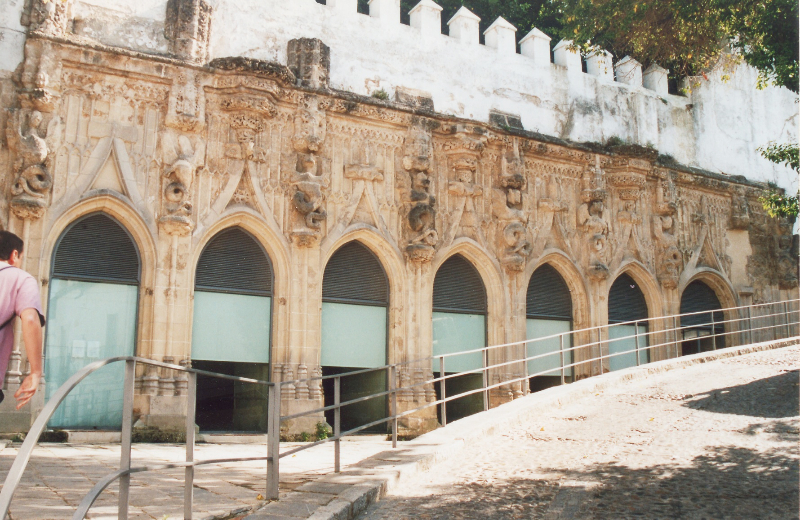Calle Bretones, Bretons street, in Sanlùcar de Barrameda port, situated in Cadix Bay, testifies to the presence of numerous Breton merchants during the Middle Ages.
As early as the XIIth and XIIIth centuries, Breton vessels trade with the big Atlantic ports of the Iberian peninsula, particularly in Biscay and in Galicia. In 1310, the duke of Brittany visits Spain to marry Isabelle of Castile and stays in Sanlùcar de Barrameda, one of the big Andalusian ports and one of the fiefs of his family in laws. And so, the Breton people obtain diverse commercial and administrative privileges in this city and they settle. A few decades later, they have their own district, a free ghetto, managed by a council. Until 1643 there remains a « mayor for the Breton people ». From the XVth century the exportation of Breton fabrics develops, particularly to the Iberian peninsula, a flourishing commerce with the creation of the colonies in South America where the Breton fabrics « Olonnes (hemp from Douarnenez)», « Crées (Linen from the North Finistère) » and « Noyales (Hemp from around Rennes) » are particularly appreciated. Some merchants open trading houses on site. The Breton vessels return loaded with Spanish wines. In the middle of the XVIIth century, we still count sixty odd Breton families in Sanlùcar, while on the other side of the bay, in Cadix, other merchants, from Saint-Malo, have also settled. At the beginning of the XVIIIth century, we count a hundred odd trading houses run by those from Saint Malo.

A Breton district in Andalusia
Author : Erwan Chartier / June 2023
CITE THIS ARTICLE
Author : Erwan Chartier, « A Breton district in Andalusia », Bécédia [en ligne], ISSN 2968-2576, mis en ligne le 29/06/2023.
Permalien: http://bcd.bzh/becedia/en/a-breton-district-in-andalusia
Author : Erwan Chartier
Erwan Chartier-Le Floch is a journalist and a writer. He has written around 20 papers on Brittany. He has a PhD in Celtic studies and teaches History and Current Affairs of Celtic Countries at Rennes 2 University.
Contributed by : Bretagne Culture Diversité 

